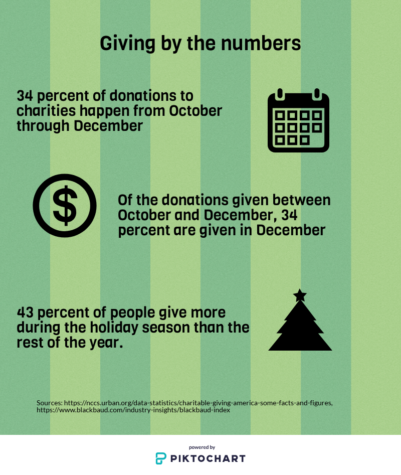‘Tis the season for gifts.
Whether giving them or receiving them, November through January has become the time of the year most known for present exchanges as several holidays within the time-frame value gifts as a means of celebration.
It is impossible to open a magazine, click on a website, or walk down the street without being hounded by advertisements for what to buy for the loved ones in your life.
However, the practice of gift giving shouldn’t be limited to the holiday season.
According to the National Center for Charitable Statistics, approximately 43 percent of people give more during the holiday season than the rest of the year.
In addition to the gifts for the loved ones in our lives, we also give to charities and other organizations during this time of the year as well. For example, canned food drives, donations of winter coats, and toys are all commonplace forms of giving throughout the holiday season.
But once the tree comes down and the Christmas lights get turned off, there will still be people in need.
Thirty-four percent of donations to charitable organizations take place between October and December, with half of that being donated in December alone, according to the Blackbaud Index.
While awareness is higher for charities during the holiday season than it is during the rest of the year, the fact of the matter is that people will always be struggling, no matter what time of year it is.
Of those 34 percent of donations given between October and December, 18 percent alone are given during December.
While yes, most of us cannot afford to drop large amounts of money on a monthly basis, spreading our donations throughout the year will help organizations continue their work even after the major gift frenzy of winter’s holiday season.
And if you can’t donate money, you can always donate time. Charities find themselves full of volunteers in the middle of the holiday season, but that doesn’t mean that is the only season they need volunteers in.
Additionally, many families may use holiday volunteering opportunities to teach young children the value of doing good for others.
But why should doing good be a one time occasion? Teaching your children the value of charitable acts consistently will not only send them the message, but it will also remind them that giving isn’t a one-hit wonder. Despite the American preoccupation with optimism, in reality, things aren’t always as good as they may seem.
In a society that has built itself off of immense materialism and consumerism, shouldn’t we share the wealth?



